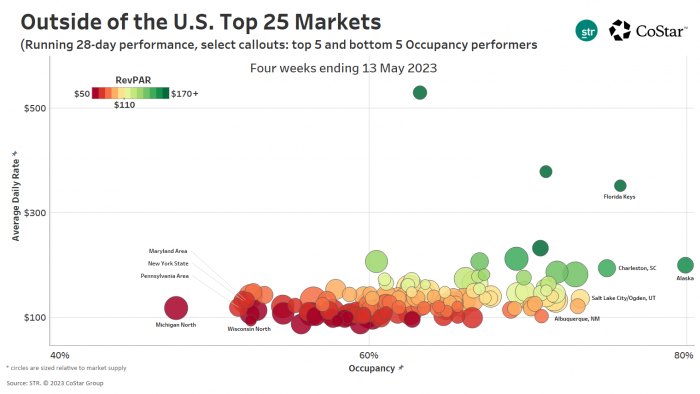Analysis by M. Brian Riley
U.S. hotel performance produced an incremental gain during the four weeks ending 13 May, a period that falls in between the heavy, summer travel season and earlier year peaks that include solid leisure travel, improved demand from conventions and group bookings, and returning business travel in larger markets. At a market-level, New York City continued to hold down the top occupancy spot while markets like Boston, Washington, D.C. and Alaska joined the leaderboard.
Four-weeks ending 13 May 2023:
- Occupancy grew 1.4 percentage points (ppts) from the previous four weeks to 66.0%.
- Occupancy was up 0.4 ppts from the matching period in 2022.
- Occupancy remained down 3.1 ppts from the 2019 comparable of 69.1%.
While the rate of new rooms in construction has flattened since the pandemic, it is worth adding that long-term supply growth of 3.3% from the matched period in 2019 is playing into that percentage change against pre-pandemic times.
Leisure travel remains the primary driving force during the current phase of the recovery, as indicated by comparatively strong weekend performance compared to weekdays. Importantly though, the Top 25 Markets continue gaining occupancy on weekdays compared to last year although distinct deficits against 2019 remain in place in most large markets.
Outside of major markets, weekends continue to show narrow annual declines toward more “typical” pre-pandemic levels. Compared to last year, pent-up demand and excess savings have decreased. Likewise, persistent inflation, relatively flat wage growth and belt-tightening across select business sectors may potentially add constraints to improving hotel performance indicators.

